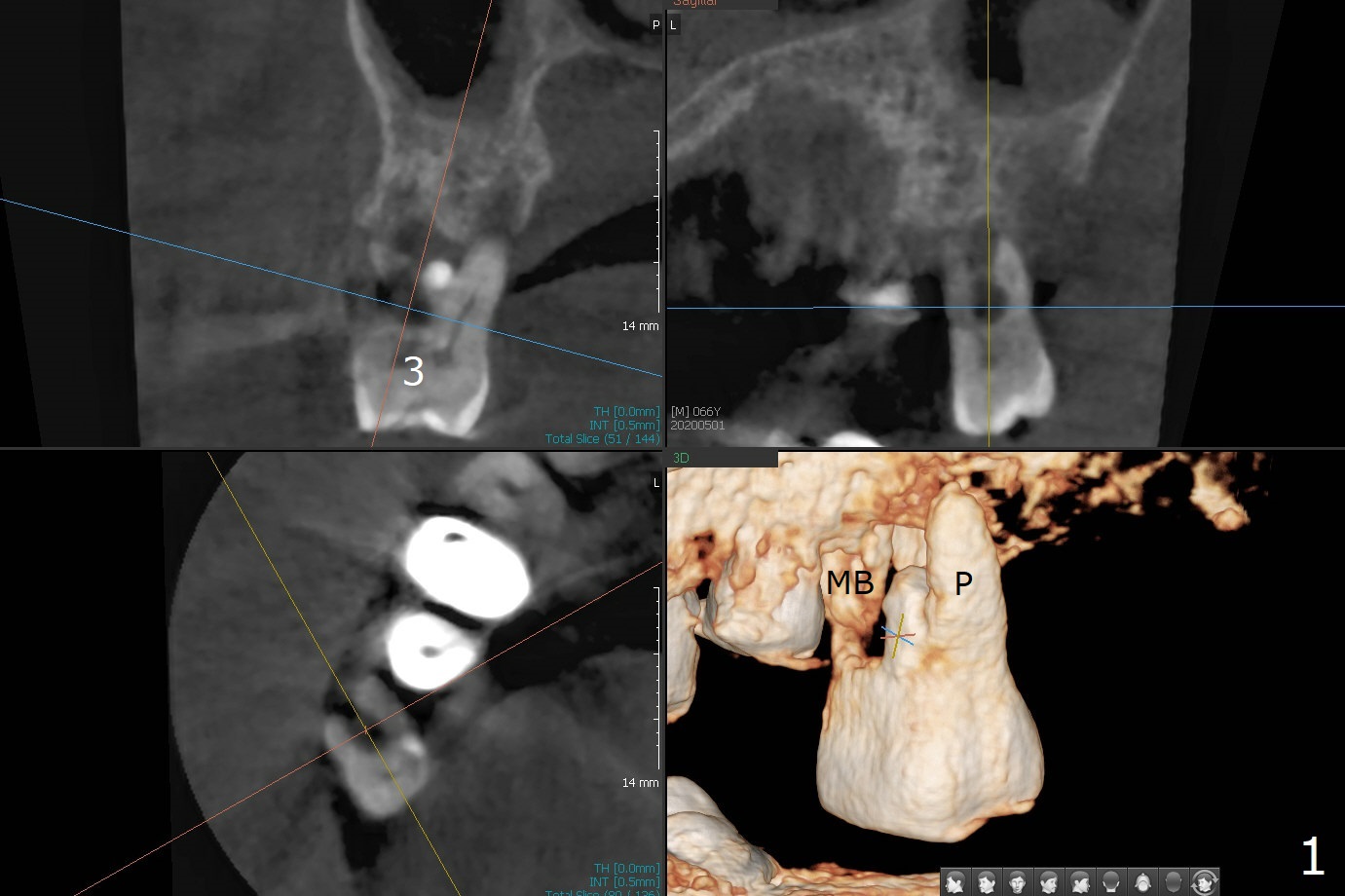
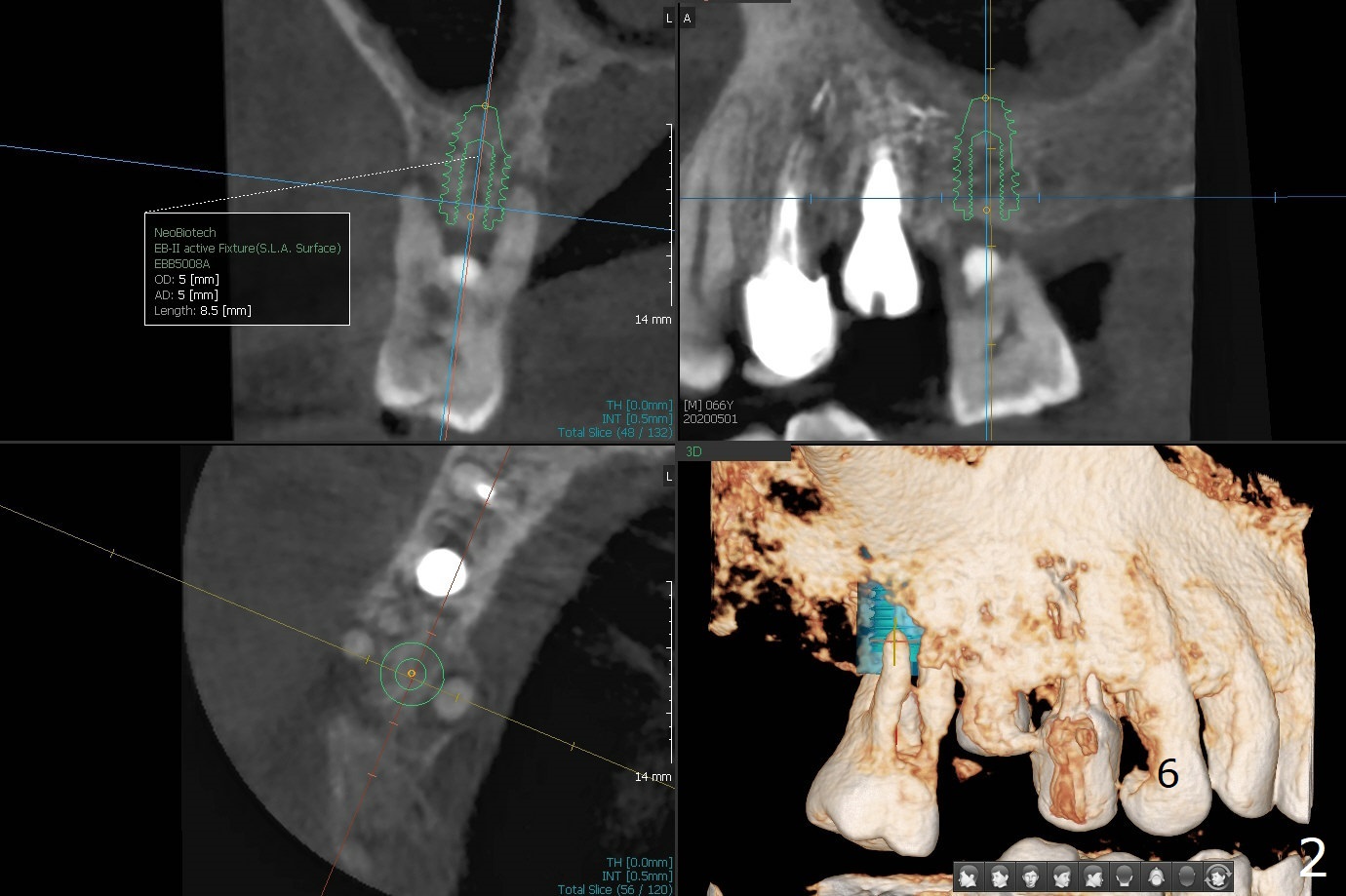
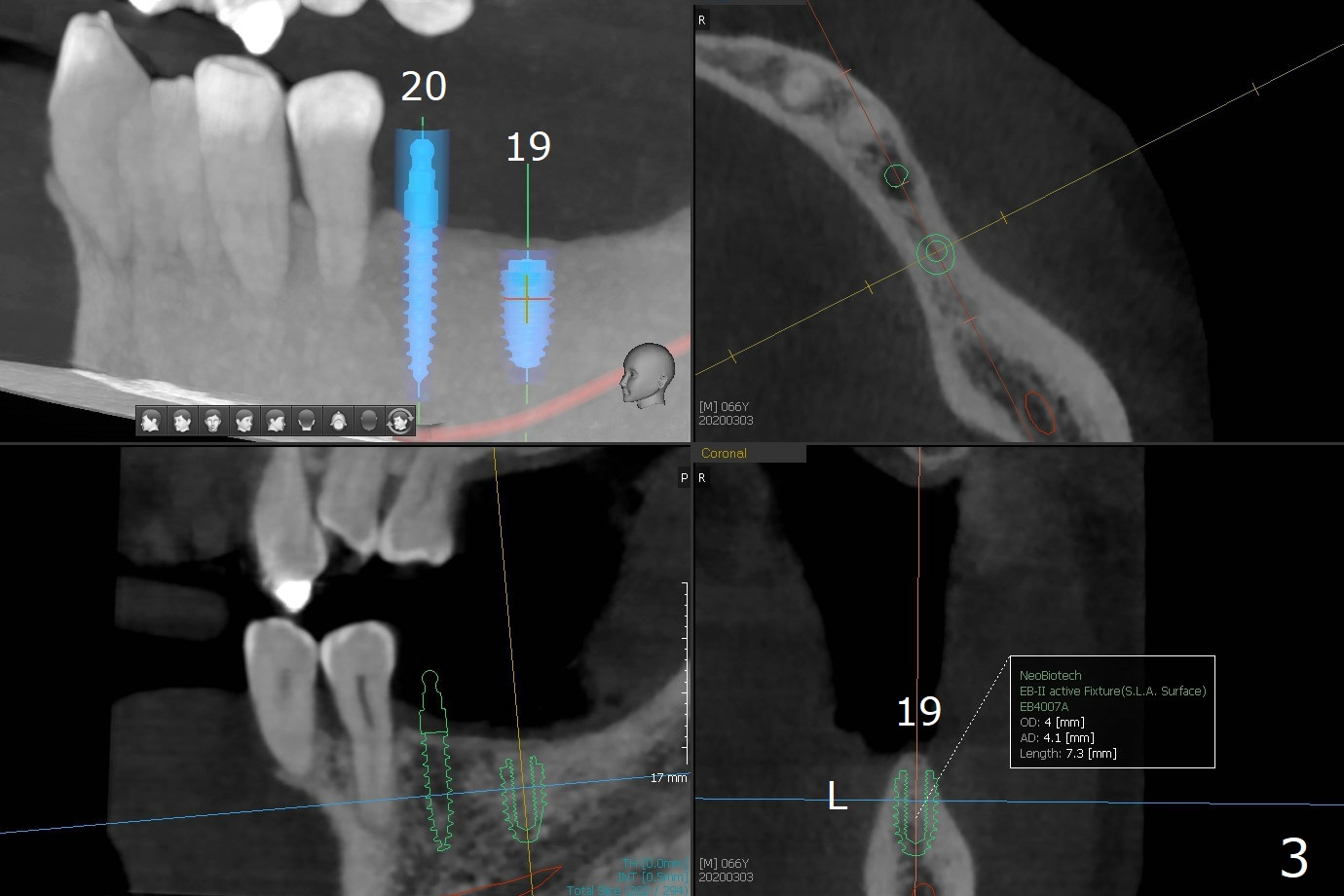
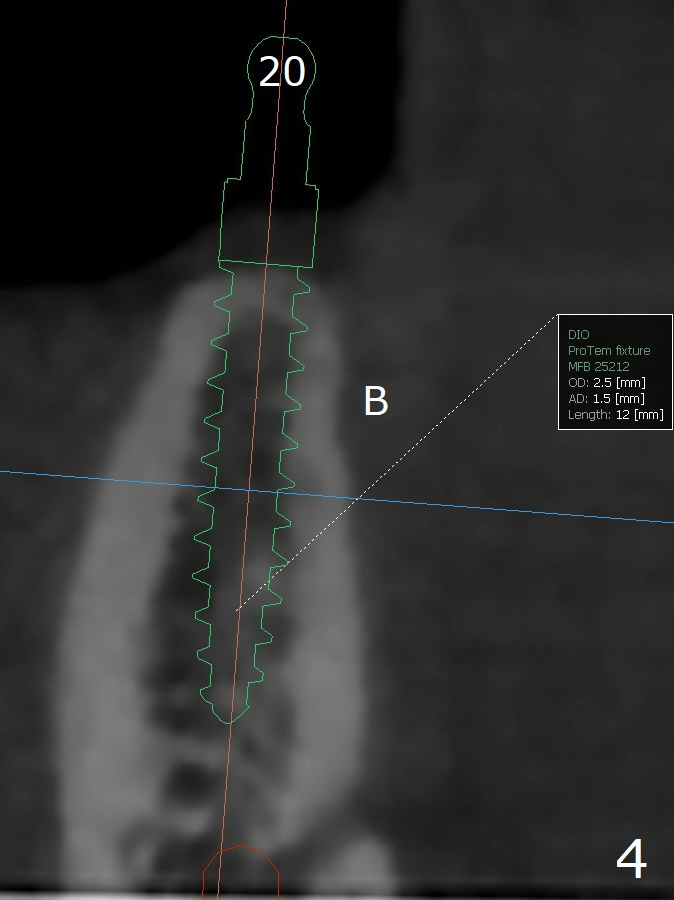
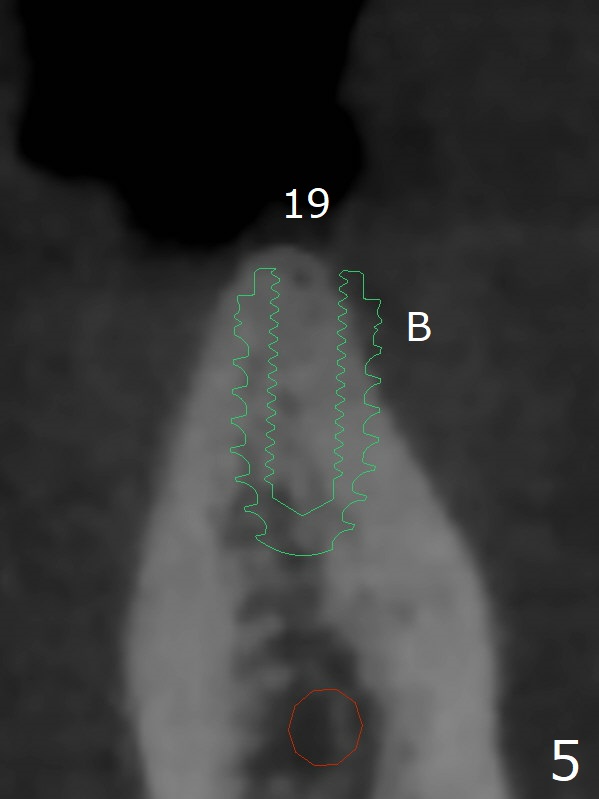
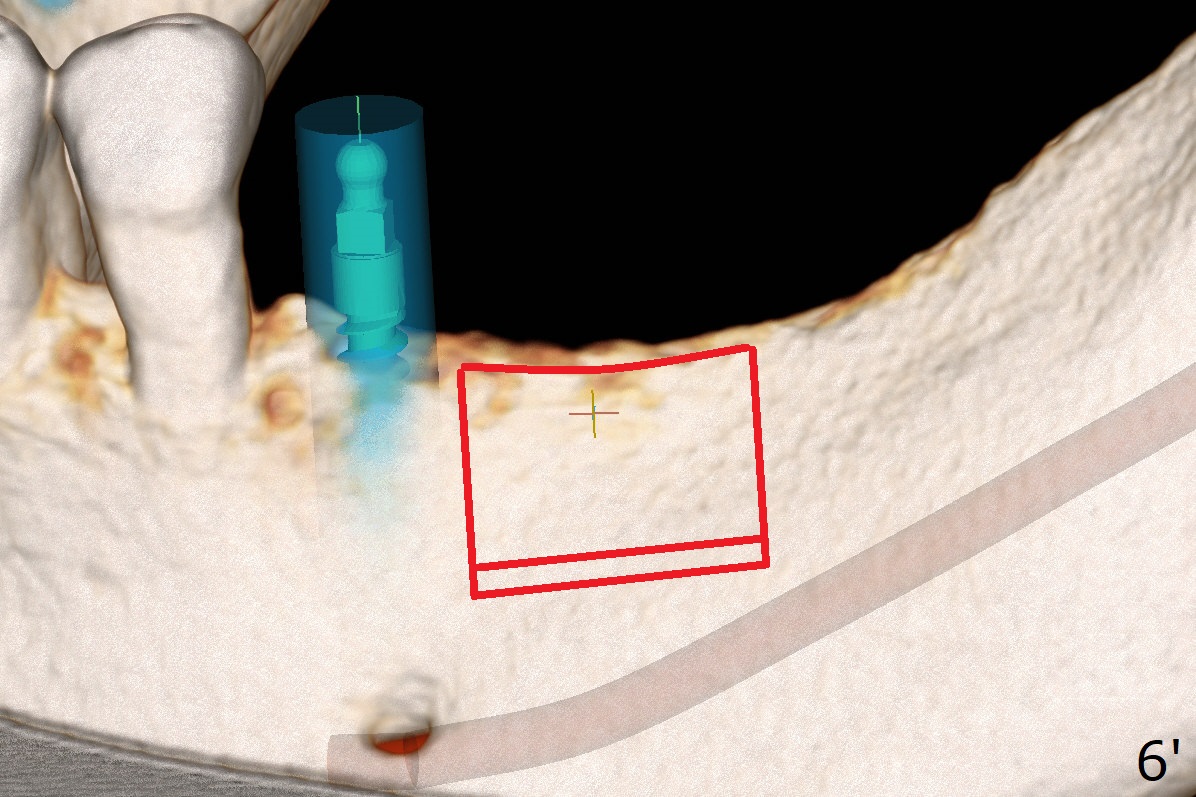
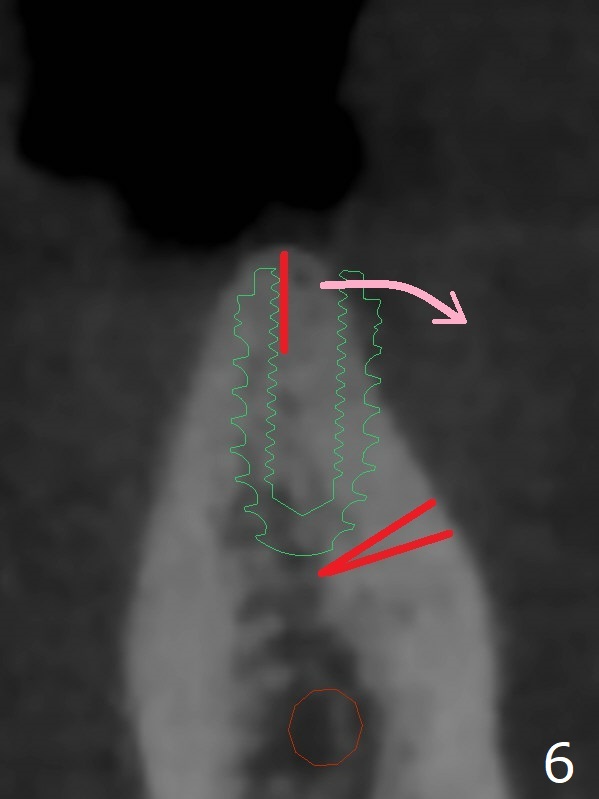
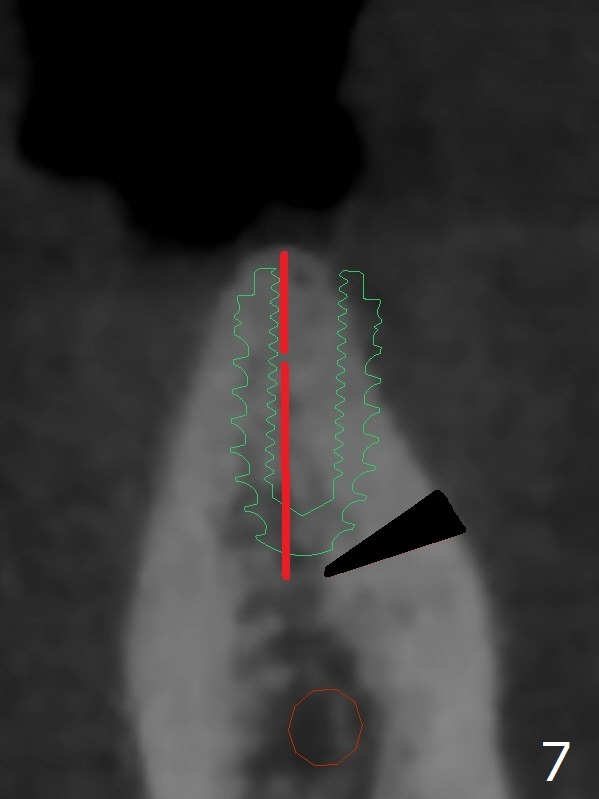
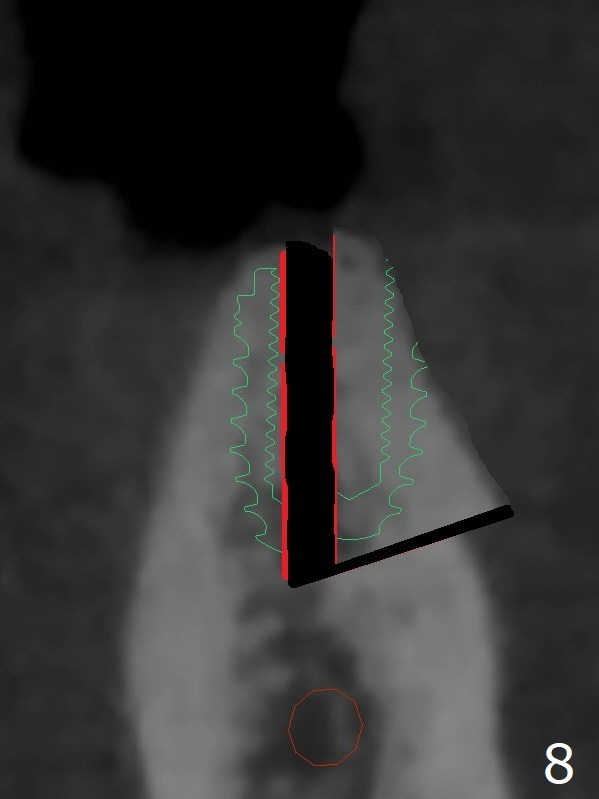
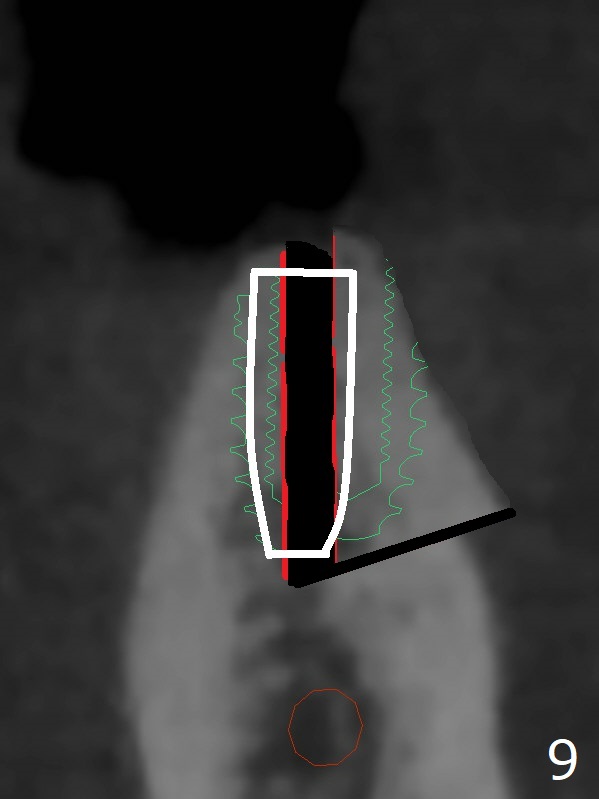
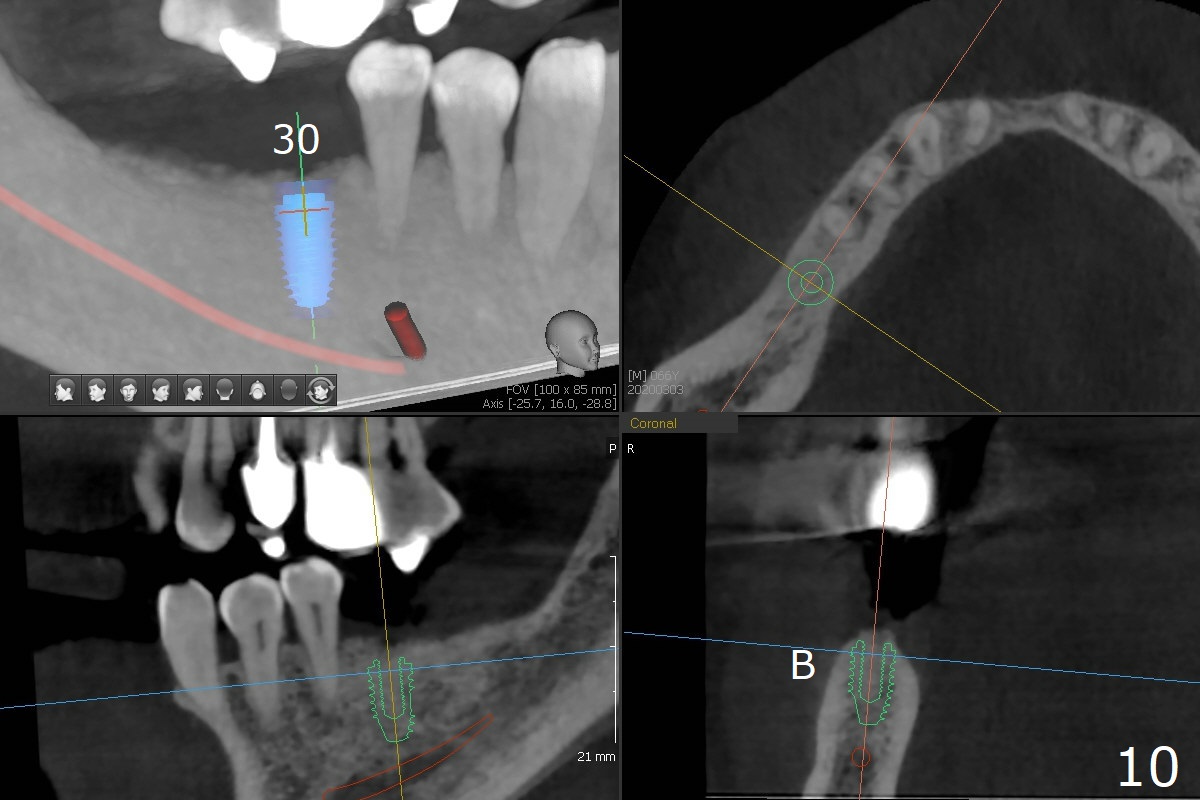
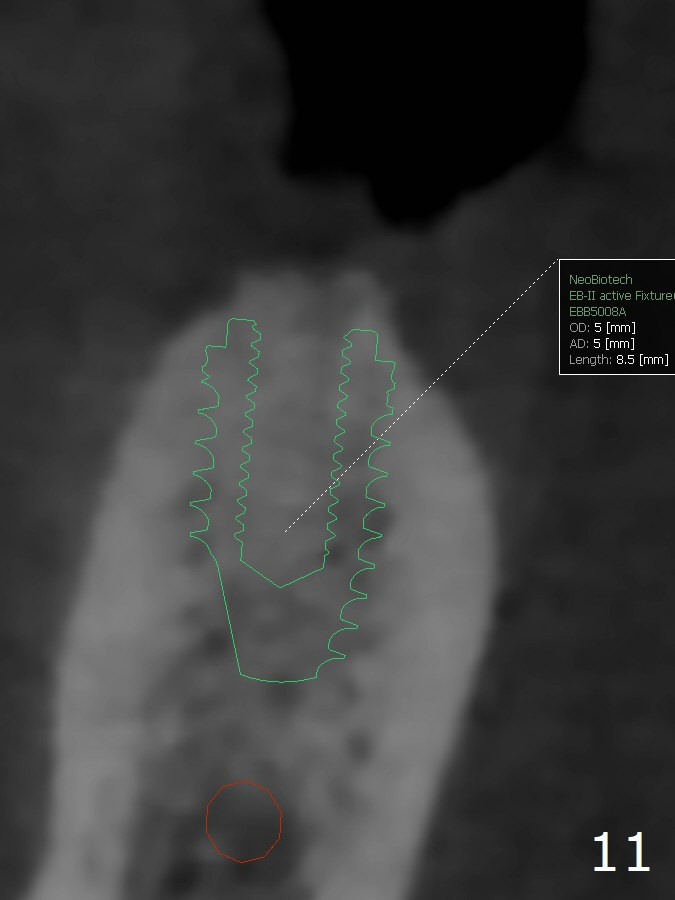
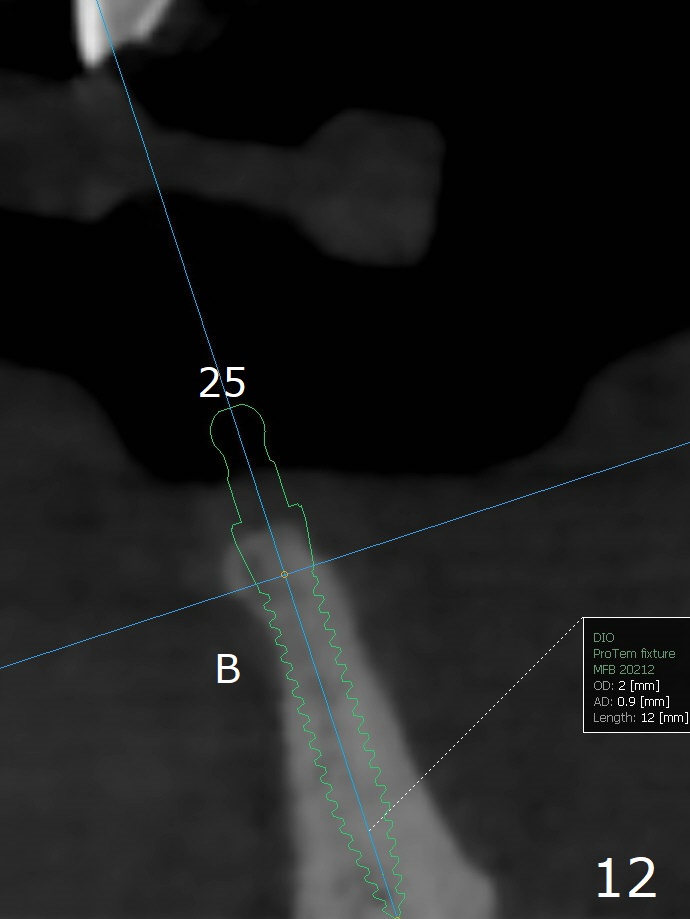
 |
 |
 |
||
 |
 |
 |
 |
 |
 |
 |
 |
 |
 |
Next Possible Implants
When implants at #4, 13 and 14 are placed, the patient wonders how many more implants are needed. From 0 (considering a lower RPD) to 5 (#3, 19, 20, 25 and 30). The tooth #3 seems to have periodontal-endodontic disease (Fig.1,2). Since the ridge is narrow at #19 and 20 (Fig.3), ridge split at #19 and a 1-piece implant at #20 are planned (Fig.4,5-9). The implant at #19 will be placed in an ideal prosthetic position (Fig.5). The ridge transverse bony cut will be made free hand in the middle (Fig.6,6'), followed by 2 vertical cuts and 1 apical transverse one in the 1st stage of procedure. In order to rotate the buccal block easier (Fig.6 pink curved arrow), the apical transverse cut will be wedge in shape (Fig.6 (red), 6' (double lines), 7 (black)). In the 2nd stage, the ridge top split will be extended by using a chisel (Fig.7 longer red line) and the buccal block will be pushed buccally (Fig.8). A guide will be seated to finish osteotomy (Fig.9 white) and implant placement.
While the ridge at #30 is normal for a normal sized implant (Fig.10,11), the one at #25 is not (Fig.12, a 2 mm 1-piece implant).
Return to
No Deviation
1-Piece
Xin Wei, DDS, PhD, MS 1st edition
05/02/2020, last revision
03/29/2021